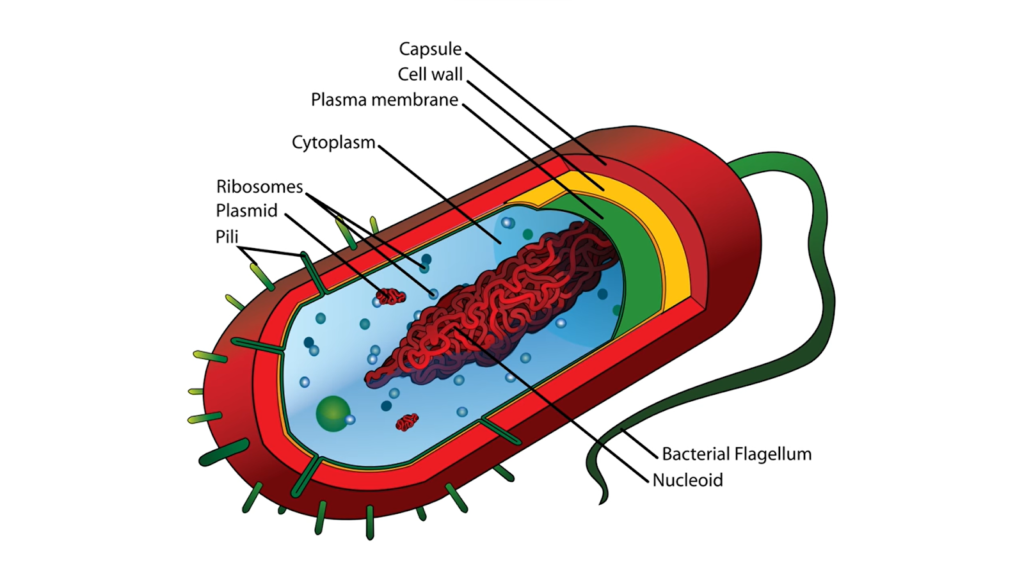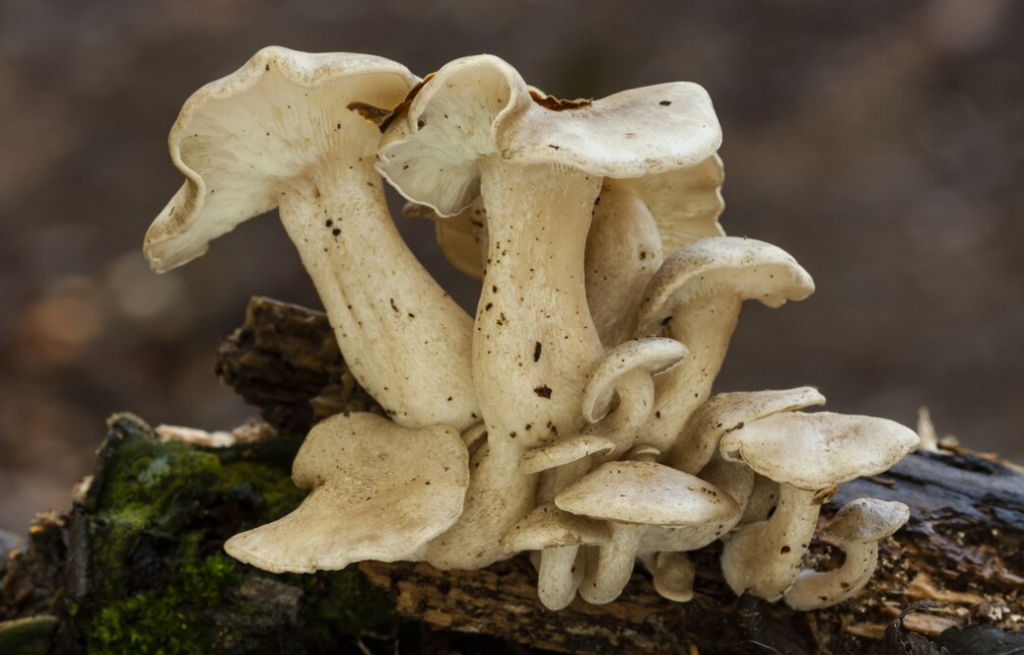The microbial world teems with life’s vast diversity. Among the intricate tapestry of organisms, a frequently posed question emerges: Do prokaryotes have fungi? In this article, we will dive deep into the microscopic realm to unravel this mystery.
What are Prokaryotes?
Prokaryotes represent some of the oldest and most fundamental forms of life on Earth. These unicellular organisms are distinguished by the absence of a true nucleus and other membrane-bound organelles. The term “prokaryote” has its etymological roots in the Greek words ‘pro’ (before) and ‘karyon’ (nucleus), indicating their primitive nature relative to eukaryotes, which do possess nuclei.
Prokaryotes can be segmented into two primary domains: Bacteria and Archaea. While both fall under the prokaryotic umbrella, they possess distinct differences at the molecular and biochemical levels.
- Bacteria: These are the most widely recognized prokaryotes and can be found in an extensive range of habitats. Bacteria play a myriad of roles, from aiding in digestion within our guts, to causing diseases, to facilitating essential biogeochemical cycles in the environment. They exhibit a diverse array of shapes, ranging from spherical (cocci) to rod-like (bacilli) and even spiral (spirochetes);
- Archaea: Previously thought to be a kind of bacteria, Archaea are now recognized as a separate domain due to their unique genetic and biochemical features. What’s fascinating about archaea is their ability to thrive in extreme environments, which most other life forms find inhospitable. This includes places like high-salinity salt flats, acidic lakes, and the scalding waters of hydrothermal vents in the deep sea.
In terms of habitat diversity, prokaryotes are truly unmatched. They are virtually omnipresent, colonizing a multitude of environments from the human body, where they form vital components of our microbiome, to the farthest reaches of our planet, like the upper atmosphere or deep within the Earth’s crust. Their resilience and adaptability have enabled them to play foundational roles in ecosystems, be it as primary producers in the ocean or as decomposers breaking down organic matter in soil.

Fungi Basics
Fungi, often referred to as nature’s recyclers, constitute a diverse kingdom of eukaryotic organisms that play a pivotal role in various ecological and biological processes. At the cellular level, fungi stand out due to their complex structures, characterized by a distinct nucleus enveloped by a nuclear membrane and several other membrane-bound organelles. This eukaryotic nature differentiates them from prokaryotes like bacteria.
Diving into the members of this kingdom, fungi can manifest in several forms:
- Yeasts: These are unicellular fungi that are prevalent in many environments, both natural and man-made. Yeasts are particularly renowned for their role in fermentation, aiding in the production of bread, beer, and wine;
- Molds: Often seen as fuzzy patches on expired food or damp walls, molds are multicellular fungi that grow in the form of long filaments. They reproduce by producing a vast number of tiny spores which can be air-borne;
- Mushrooms: These are the fruiting bodies of certain fungi. Beyond their culinary uses, some mushrooms are known for their medicinal properties or their psychedelic effects.
The nutritional strategy employed by fungi is heterotrophy. Unlike plants that harness sunlight for energy through photosynthesis, fungi obtain their nutrients through absorption. They secrete enzymes that break down complex organic materials into simpler forms, which are then absorbed by their cells. This external digestion process enables fungi to thrive on diverse sources:
- Decomposers: Most fungi obtain nutrients from decaying organic matter. By breaking down dead plants, animals, and other organic debris, they play a crucial role in nutrient cycling, ensuring that essential elements are recycled in ecosystems;
- Symbiotic Relationships: Some fungi form mutualistic associations with other organisms. The most notable example is the relationship between mycorrhizal fungi and plants. Here, fungi provide the plants with essential nutrients like phosphorus, while the plants supply the fungi with sugars produced through photosynthesis;
- Parasitic Fungi: Not all fungi-sustained relationships are benign. Some fungi are parasitic, deriving their nutrients from living plants or animals, often causing diseases in their hosts.
Additionally, fungi possess a unique cell wall made of chitin, a substance also found in the exoskeletons of insects and other arthropods. This further distinguishes them from plants, which have cell walls made of cellulose.
Can Prokaryotes Have Fungi?
Prokaryotes and fungi are distinct entities in the realm of biology, belonging to separate domains of life. Prokaryotes encompass bacteria and archaea, organisms characterized by the absence of a true nucleus and other membrane-bound organelles. Their genetic material is often contained within a simple, circular molecule of DNA. On the other hand, fungi are eukaryotic organisms, meaning they possess a true nucleus surrounded by a nuclear envelope and other specialized organelles. Fungi, which include yeasts, molds, and mushrooms, have complex cellular structures and are more closely related to animals and plants than they are to prokaryotes. Thus, prokaryotes do not “have” fungi; they are entirely separate and unrelated groups of organisms in the tree of life.
The Difference Between Prokaryotes and Fungi
Prokaryotes and fungi represent two fundamentally different branches of life on Earth, each with distinct characteristics. Prokaryotes, which include bacteria and archaea, are unicellular organisms that lack a membrane-bound nucleus and other internal organelles. Their genetic material is found in a single circular DNA molecule, and they reproduce primarily through binary fission. On the other hand, fungi belong to the eukaryotic domain, which means they possess a true nucleus enclosed by a nuclear membrane and have complex organelles such as mitochondria and endoplasmic reticulum. Fungi can be unicellular, like yeasts, or multicellular, like molds and mushrooms. They primarily reproduce through spores and obtain nutrients through absorption, often decomposing organic material in their environment. These distinctions in cellular structure, reproduction, and life cycles underscore the evolutionary separation and functional diversity between prokaryotes and fungi.
While both prokaryotes and fungi play essential roles in ecosystems and have shared evolutionary history, they are distinctly different in many aspects:
- Cellular Structure: As previously mentioned, prokaryotes lack a nucleus, while fungi possess a nucleus and other eukaryotic characteristics;
- Reproduction: Prokaryotes generally reproduce asexually by binary fission, while fungi can reproduce both sexually and asexually through spores;
- Nutrition: While most prokaryotes can produce their own food through photosynthesis or chemosynthesis, fungi are primarily decomposers, breaking down organic matter.
Fungi’s Interactions with Prokaryotes

In the intricate web of life, fungi and prokaryotes, though originating from different evolutionary lineages, frequently engage in dynamic interactions that can be both cooperative and competitive.
- Symbiotic Associations: Nature is replete with examples of mutualism between fungi and bacteria. One of the most recognized is the alliance between mycorrhizal fungi and nitrogen-fixing bacteria within plant root systems. These alliances often bestow benefits upon the host plant, facilitating better nutrient absorption and offering resistance against pathogens;
- Role in Decomposition: The earth’s soils are teeming with microbial life, where fungi and bacteria are the primary decomposers. Collaboratively, they break down complex organic compounds, turning fallen leaves, dead organisms, and waste products into simpler compounds. This process rejuvenates the soil, ensuring a continuous supply of essential nutrients for plants;
- Competition for Dominance: While cooperation exists, competition is equally prevalent. In various niches, from forest floors to our refrigerators, fungi and bacteria vie for the same resources. The balance of power can shift based on factors like pH, moisture, and nutrient availability. This competition can have implications for food preservation, as some fungi can prevent bacterial growth, leading to longer shelf lives for certain foods, and vice versa;
- Antibiotic Interactions: Fungi’s role in antibiotic production has had profound implications for modern medicine. Certain fungi produce compounds detrimental to bacteria, giving them an edge in their ecological battles. The serendipitous discovery of penicillin from the fungus Penicillium transformed medical science, offering a potent weapon against bacterial infections.
Moreover, there are other subtle interactions that science is still unveiling. Biofilm formation, quorum sensing, and the exchange of signaling molecules are areas of intense research. These interactions, whether antagonistic or cooperative, play a crucial role in maintaining ecological balance and have significant implications for agriculture, medicine, and biotechnology.
Conclusion
The realms of prokaryotes and fungi are diverse and complex. While prokaryotes do not ‘have’ fungi, their interactions in nature are intricate and multifaceted. Understanding these interactions provides insights into ecosystem dynamics, medical applications, and the deep evolutionary history of life on Earth.
With the current advancements in microbiological research, the relationship between fungi and prokaryotes continues to reveal fascinating nuances. As we uncover more, it only emphasizes the beauty and complexity of the microscopic world around us.
After exploring the relationships between prokaryotes and fungi, which offer insights into ecosystem dynamics, medical applications, and the deep evolutionary history of life on Earth, it’s worth delving into an article about the history of Fungi. This article provides a broader context for understanding how fungi have evolved and shaped the microbial world over millennia.

